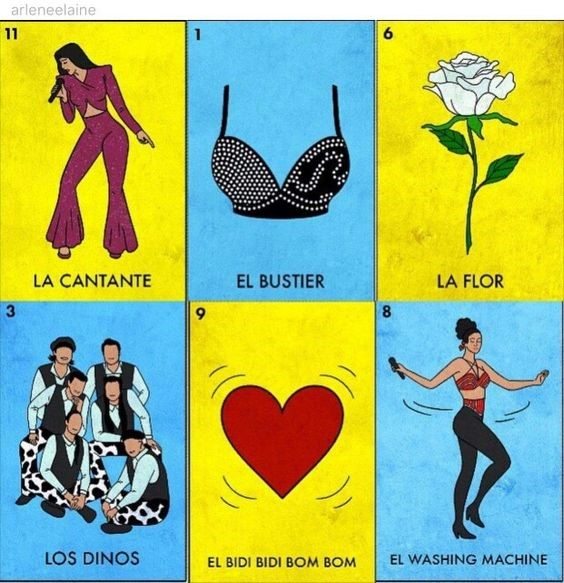The Most Creative Loteria Cards Ever!
The origin of Loteria (Lottery) can be traced far back in history. Originating in 15th century Italy, the iconic game of chance was eventually introduced to Mexico in 1769. Initially, Loteria was a hobby of the upper classes, but it eventually became a wide tradition at Mexican fairs. Loteria is extremely similar to bingo, however, it uses pictures called la Loteria cards instead of numbers.
The beautiful artwork associated with Loteria has long captivated consumers from all nationalities and walks of life; with some saying the artwork portrays the joy and sadness of Mexican history. Aside from cards, Loteria images can be featured anywhere – from tapestries to blankets, to wall hangings and artwork. With this in mind, here are some of the most creative La Loteria Cards ever created.
Most Famous Version, Pasatiempos Gallo:

Created in the city of Satiago de Querétaro (operating as Don Clemente, Inc. in the United States) in 1887, this version of Loteria is easily the most recognisable and famous. Consisting of 54 cards, they also feature riddles that are sometimes used to indicate which card was drawn, such as:
El gallo (“the rooster”):
Spanish: “El que le cantó a San Pedro no le volverá a cantar”.
English: “The one that sang for St. Peter will never sing for him again”.
La botella (“The Bottle”)
Spanish: “La herramienta del borracho”.
English: “The tool of the drunk”.
El diablito (“The Devil”)
Spanish: “Pórtate bien cuatito, si no te lleva el coloradito”.
English: “Behave yourself buddy, or the little red one will take you away”.
La araña (“The Spider”)
Spanish: “Atarántamela a palos, no me la dejes llegar”.
English: “Beat it silly with a stick, do not let it near me”.
Star Wars Set:
In this version the original Loteria cards have been cleverly adjusted to reference Star Wars. ‘El Soldado’ (the soldier) has been changed to a Stormtrooper; whilst ‘La Dama’ The Lady) has been changed to Princess Leia.

Day of the Dead Set:
Based upon the Day of the Dead celebration, this set of Loteria cards also holds Mexico’s tradition and history at heart.
Originating in Mexico, the Day of the Dead holiday celebration focuses on gatherings of family and friends to pray for and remember those who have died and support their spiritual journey. The Day of the Dead celebrations in Mexico developed from ancient traditions among its pre-Columbian cultures. The festivities are dedicated to the goddess known as the “Lady of the Dead”, corresponding to the modern La Calavera Catrina.
José Guadalupe Posada created a famous print of a figure he called La Calavera Catrina (The Elegant Skull) as a parody of a Mexican upper-class female. Posada’s striking image of a costumed female with a skeleton face has become associated with the Day of the Dead, and Catrina figures often are a prominent part of modern Day of the Dead observances.
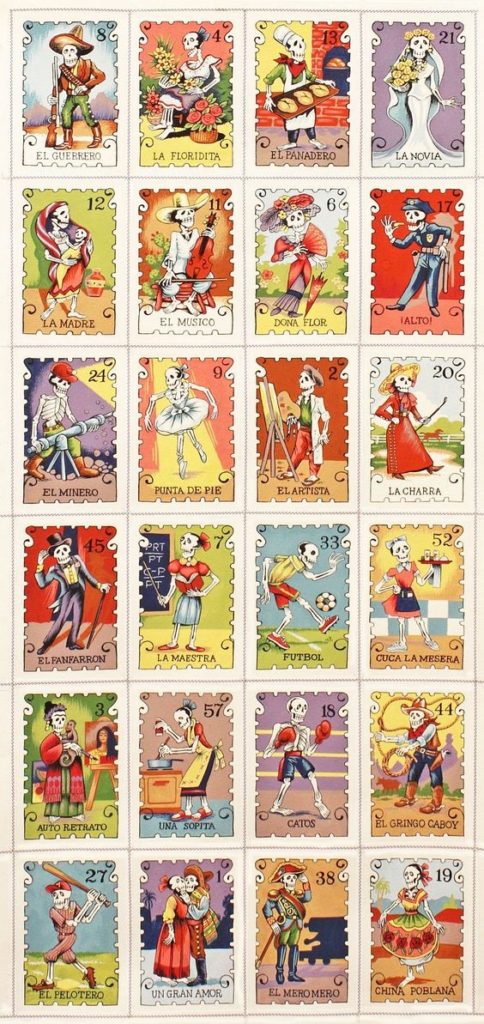
Donald Trump Devil Card:
Since his presidential victory last year, Donald Trump has been at the centre of worldwide media – for the good, the bad and the ugly… Clearly, the unknown creator of this card views Trump in a slightly negative light, considering “El Maligno” translates to “The Evil One”.
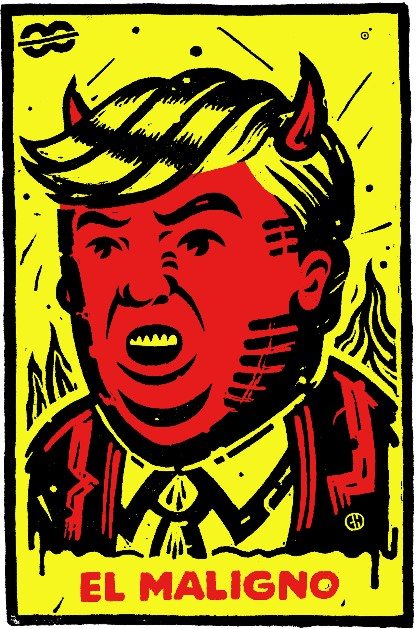
Wrestler Card:
Instead of using the original Loteria card names, this artist has decided to introduce an entirely new card “El Luchador” (The Wrestler). It’s safe to assume they’re definitely a wrestling fan – I wonder what the other cards would look like…
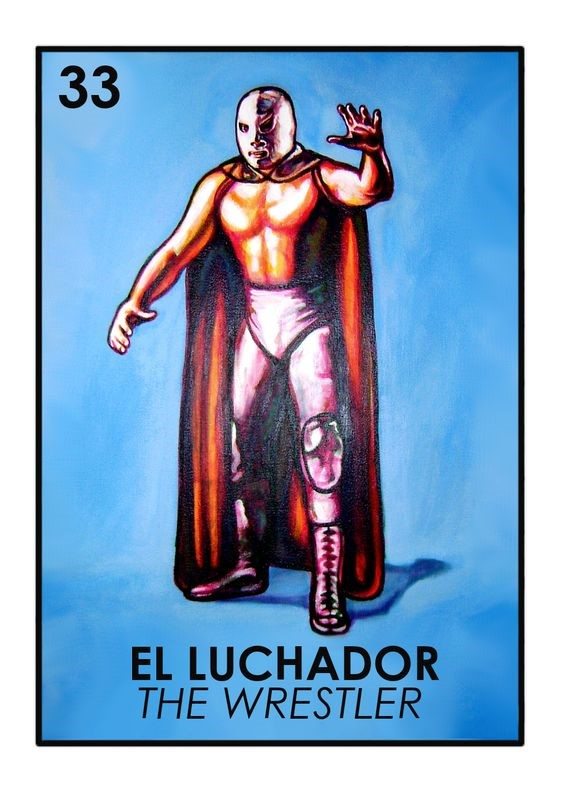
Homer Simpson Card:
Taking inspiration from America’s longest-running sitcom and animated program The Simpsons, this artist has drawn a version of Homer Simpson in the traditional Loteria art style but has labelled him as “El Borracho” (The Drunk), can’t imagine why.
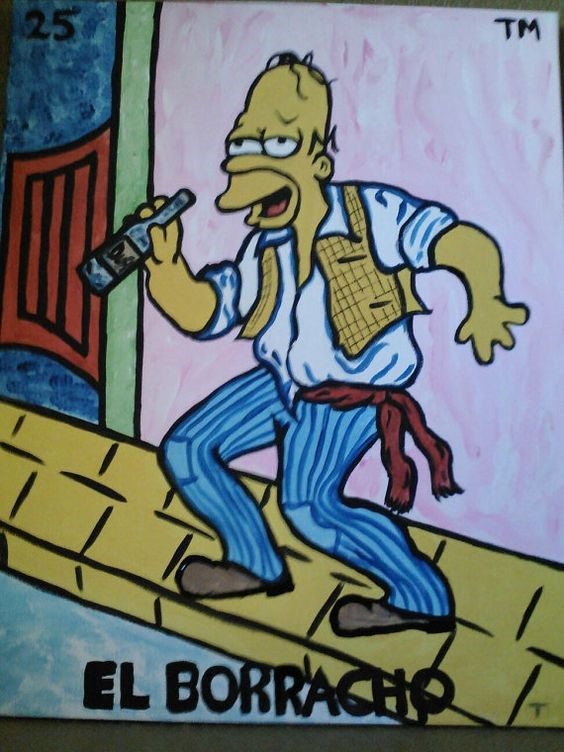
Selena Quintanilla-Pérez Set:
Inspired by American singer Selena Quintanilla-Pérez, this set of Loteria cards reflect on the singer’s career, including her famous songs ‘El Bidi Bidi Bom Bom’ and ‘Como la Flor’ (Like the Flower).
